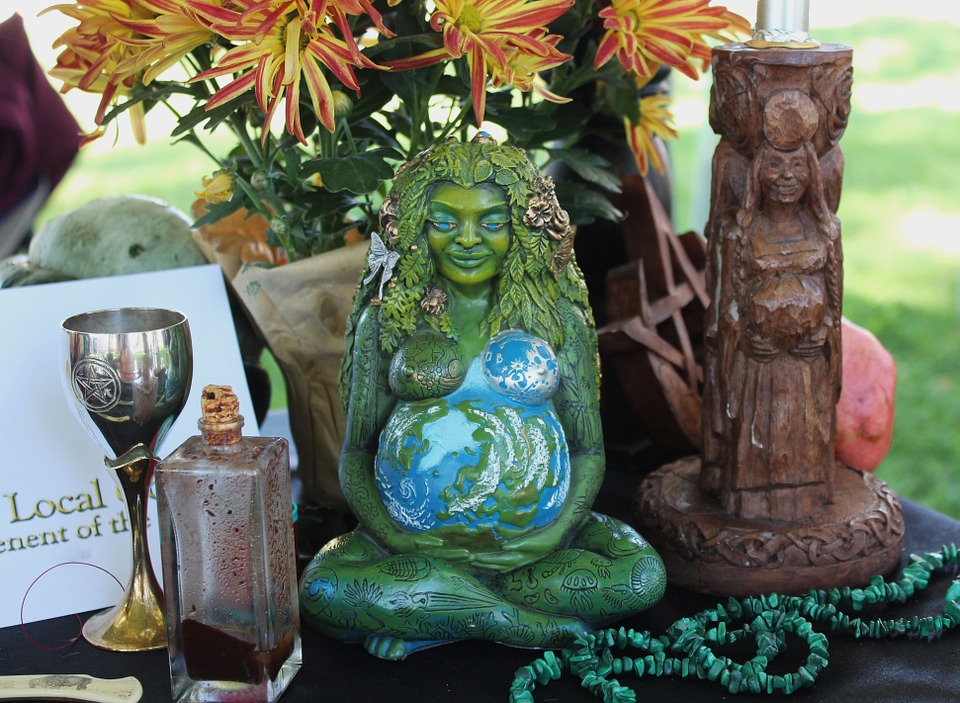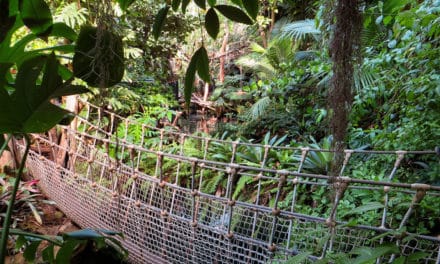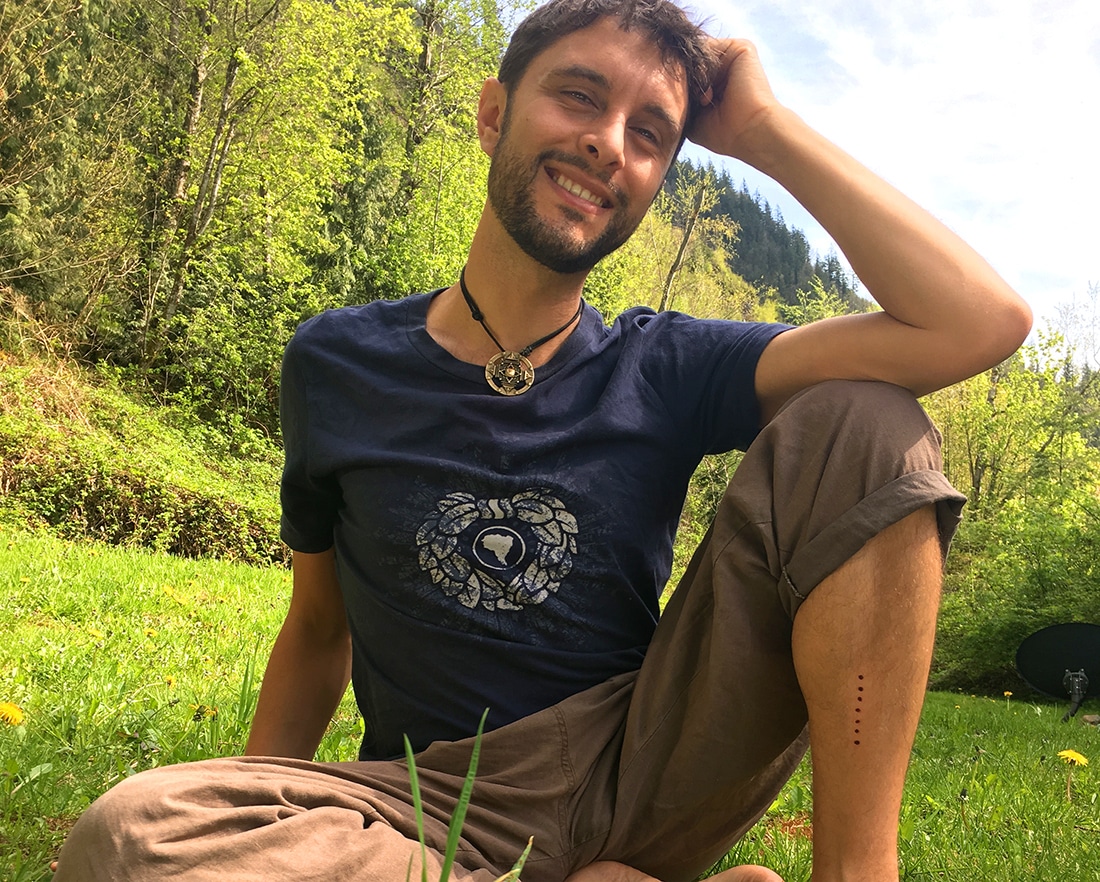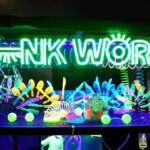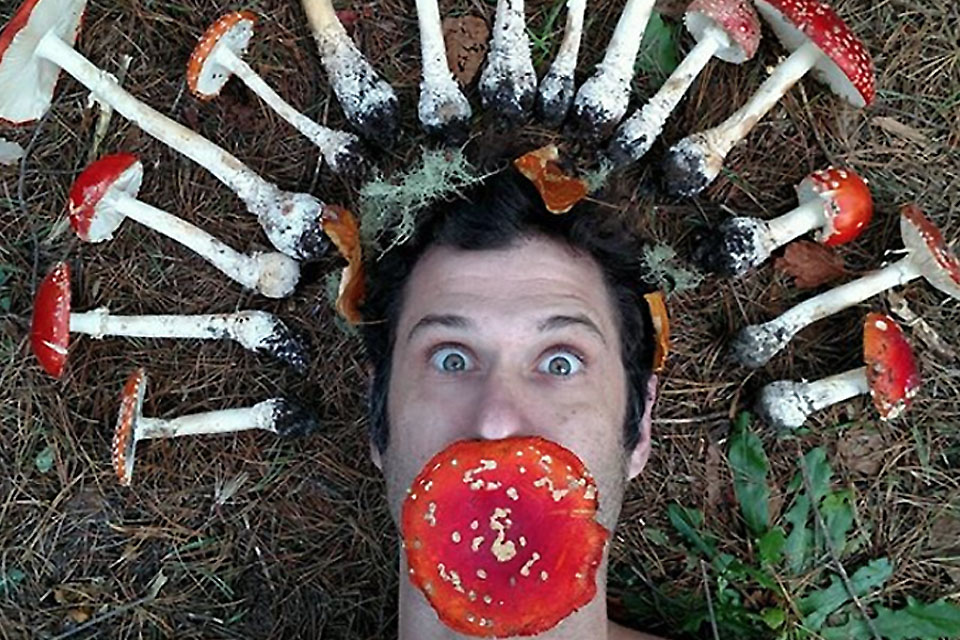
Author and psychedelic historian Tom Hatsis speaks with Psychedelic Times about mysticism and ritual magick, and what the psychedelic renaissance can learn from it.
Thanks so much for speaking with us, Tom. When it comes to mysticism we often think of Eastern or indigenous traditions, but the West has its own mystical practices which include the ancient use of psychoactive plants and fungi. Can you give a brief overview of where this mostly hidden thread has continued from ancient times until today?
With Western psychedelia we aren’t necessarily always looking for some kind of entheogen-based mysticism. The majority of the time we are looking for individuals within a certain religion or mystical tradition who modified the original faith to fit the use of psychoactive plants. Such historical detection works in three parts, beginning with the wider religious culture and funneling it down to an individual. I’ll use ancient Christian “Gnosticism” as an example:
1. In the ancient world, numerous mystical Christian belief systems fell under a broad umbrella term called “Gnosticism.” (Wider religious culture)
2. One of these various Gnostic groups was known as the “Valentinians.” (Religious community within the culture)
3. And while the Valentinians didn’t have any kind of entheogen built into their belief system, we know about a Valentinian guy named Marcus who seems to have used psychoactive potions in his religious observations (at least those involving sex magic.) (Individual use)
So Gnosticism as a general principle didn’t include psychoactives; neither did Valentinianism. But Marcus, who happened to be a Valentinian, did.
That’s not to say that there weren’t ancient religious festivals and practices that incorporated entheogens. The Feast of Hathor in Egypt, the Oracle of Delphi, and the Dionysian Mysteries throughout Greece and Thrace all seem to attest to this. And while we still cannot say for certain whether an entheogen played a role at Eleusis (I lean towards yes, but admit it is highly debatable), the Feast of Hathor, the Delphic Oracle, and the Dionysian Mysteries were totally built around the use of psychoactives in one form or another: Hathor rites used mandrake-beer; the Delphic Oracle inhaled natural gases from the earth; and the Dionysian Mysteries included any number of wines—some enhanced with psychoactives, others not.
When we move into the medieval world, entheogens are still present. The anonymous Christian document Trudpeter Hohelied (c. 1160) describes the intoxicating properties of mandrake in proper orthodox entheogenic terms. Renaissance magician Heinrich Cornelius von Nettesheim inhaled henbane and mandrake (along with other aromatic spices) to make “spirits appear in the air.” Von Nettesheim even calls these kinds of vision-producing Solanaceae plants “spirits’ herbs.” Paracelsus made no secret about his cannabis, opium, and alcohol use.
Still later, some physicians like Gerolamo Cardano and Johannes Weyer commented that using certain transvection ointments (popularly called “witches” or “flying” ointments today) could lead to either good visions or bad visions depending on the user. Then, around the 1400s-1600s, we receive insights as to how wise-women (and even regular people) used these kinds of herbs in their magical practices. Sadly, the information we have on these obscure folkways mostly comes from the pens of theologians and inquisitors who at best mocked the women who held these beliefs and at worst executed them for the same.
Fast forward a few centuries and magicians like Paschal Beverly Randolph and Aleister Crowley recommended using hashish, mandrake, peyote, and cannabis in one form another. And, of course, many magicians and witches today carry this legacy—prepping the mind through magical techniques before delving deeply into psychedelic spaces. I certainly do.
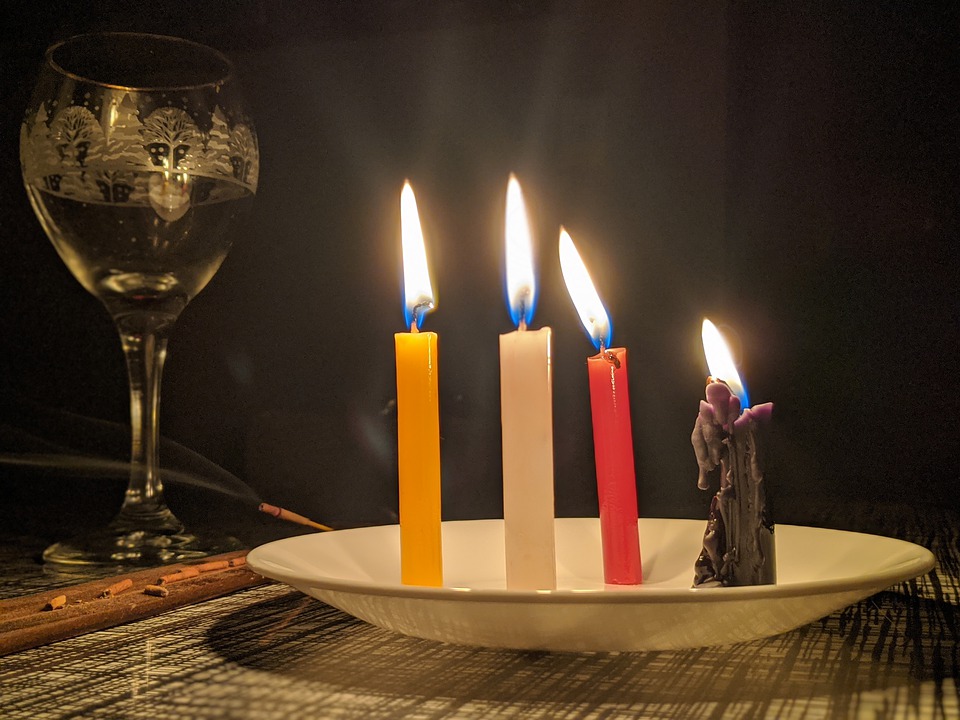
In short, despite these examples (and many others), there are a number of reasons the Western tradition seems “hidden.” But in my opinion, the two primary reasons are probably:
1. The language barrier. Many of these records are written in Latin, and/or vulgar forms of German, Italian, French, and Spanish. Even the British materials are written in yee olde Shakespearean English. Moreover, many of these sources can be a little difficult to track down, although thankfully the Internet is making that part of the process less of a hassle.
2. Authorities never condemned the plants and fungi per se, but rather condemned non-orthodox Christian acts. The idea of a so-called “Pharmacratic Inquisition”—i.e., the idea that Western medieval and early modern people were condemned for using psychoactives—is total twaddle. Here’s what I mean: even the wise-women who were burned as “witches” were never condemned for using magical ointments. Rather, Christian theologians outlawed certain beliefs about Goddess worship—not psychoactives. Now, some of those Goddess worshippers (like Pierina de Bripio) do not seem to have used magical ointments in their rites—at least she is not recorded as having done so. Others, like Matteuccia di Francesco, did use ointments in her rites. Both women—ointment or no ointment—were executed. Not for any belief about psychoactives or their use, but rather for their belief in the Goddess.
Or let’s consider Giambattista della Porta, the Renaissance Era natural philosopher, whose book Natural Magick almost had him condemned as a sorcerer by the French jurist, Jean Bodin. Bodin was pissed because in Natural Magick, della Porta wrote of using psychoactive plants in both recreational potions and in transvection ointments. However, Bodin’s allegations against della Porta did not include the recreational use of psychoactives—he was only condemned for revealing that women used Solanaceae plants to transvect. He never got in trouble for saying that the same plants were used for other magical reasons as well. In fact, the bit about the “witches’ ointment” in Natural Magick only appears in the first edition (1558). All later editions include the use of psychoactives in the “natural sciences,” but exclude any mention of the transvection ointment. To reduce these women’s crimes to a mental journey caused by plant materials left little room for the devil. And many Christian authorities—Bodin among them—did not approve.
In short, you wouldn’t have someone charging, “Wesley should be arrested for using plant medicines,” but rather “Wesley should be arrested for witchcraft.” So when researching this area, you have to dig around in the records and see not only how a person used these plants in magic and mysticism (if they did at all), but also consider how the authorities recorded the various practices.
Magick as I understand it is all about ritual, intention setting, and symbolism, all of which are familiar concepts in the psychedelic space. What can the psychedelic renaissance learn from magickal traditions?
I think psychonauts can benefit from employing magical techniques along with psychedelics. Speaking from a personal viewpoint, I’ve discovered a way to avoid bad trips because I get really witchy with my journeys. Something as simple as casting a magical circle can make a big difference. You are protecting your mind. In a recent journey, I found myself in Gaia’s palace, and she was handing me masks of “bad trips” to put on just so I could see how silly the idea of having a bad trip really was. So I put on mask after mask of devastation (both my own traumas and our collective human trauma), and none of it worked; I simply couldn’t have a bad trip. That’s not to say that I didn’t feel terrible at the thought of all that tragedy, just that it didn’t send me spiraling into an unforgiving negative headspace.
There is also a necessity to have a sense of trust with the medicine. Magick works the same way. The more you see your own magick work in your life, the easier it is to trust it. This helps with also being able to trust the medicine. Trust your magick; trust the medicine.
You mentioned symbolism. I add Symbolism (and Spirit) to the well-known “Substance, Set, Setting” model—so, Substance, Set, Setting, Symbolism, and Spirit. In my opinion, the Substance, Set, and Setting can get you to some very beautiful, introspective, visionary, and peaceful places; but I like to use Symbolism as well to unlock Spirit.
What I mean is this: I use different symbols to reach different Goddess states. So, let’s say I intend to invoke Gaia because I desire a swim in Her cosmic love for a few hours. A part of my ritual when casting this particular magickal circle involves offerings of honey and barley, as they are both sacred to Her. Or, if I am invoking Hekate, I bury the medicine (and fur from a black dog) in the earth for three days prior to the ceremony (Hekate is a chthonic deity; black dogs are sacred to Her.) Sage leaf and henbane are burned for Her. Look at these realms (and the Goddesses and Gods who preside over them) as addresses within Gaia’s larger palace. You have to know the specific address (Symbolism) to reach the desired destination (Spirit). I suppose in that way, magical traditions can aid in deeper and more meaningful psychedelic experiences today.
I’m not saying anyone should adopt my silly belief system (you’d have to be nuts!), but instead to develop your own system for understanding these deep entheogenic states. I have found the practice to be an infinitely rewarding addition to the human experience. I would especially recommend this kind of technique for those people who are sensitive to energies (or “entities,” depending on terminological preference.)
Perhaps most importantly, what we of the psychedelic renaissance can learn from magick is that a prepared mind is the most powerful tool we have if and when we decide to take a voyage. Magicians have known this for millennia.
Paying attention to creating a container that works for you is of paramount importance.
Like psychedelics, magick brings a familiar enchantment to life—something we all vaguely recognize, like an unreachable memory from childhood, which brings us deep into the mysterious heart of humanity itself.
A big part of the modern psychedelic renaissance is about therapy and medicalization. How do you view these developments, and in your opinion where do magickal and psycho-spiritual contexts fit within this emerging paradigm?
The psychospiritual paradigm, I think, can only emerge if we follow a decriminalization model (like Oakland, CA, and Chicago, IL), and not a legalization model. I see entheogens as a natural right of which all humans are welcome to partake (or not.) For me, they are natural gifts from Gaia.
I don’t need to sit with a government-approved therapist (legalization). I need to sit with mushrooms, Gaia (or some other goddess), my partner, and my kitty cat (decriminalization). Quite frankly, I find the idea of any government office telling me how I am allowed to practice my spirituality both laughable and insulting. The human soul (unsurprisingly) rejects these kinds of authoritarian restrictions; it has breathed and danced in harmony with these natural sacraments for thousands of years. Legalization means government involvement in private medical and spiritual matters. That sounds quite terrible.
Equally execrably Orwellian as government-approved spirituality is the fact that legalization will also bring corporate interests into the picture. Then corners get cut through profit motives, medicine gets corrupted, red tape goes up, and soon the very heart of entheogenism is gone. Legalization will do to plant medicines what McDonald’s did to the hamburger.
Licensed practitioners can still utilize the medical model within a larger decriminalization backdrop, and many already have underground practices anyway. I think it’s important that the medical model be able to thrive, but not at the expense of both private-care and/or spirituality. Legalization [usually] allows for the former (medical), not for the latter (private use); decriminalization allows for both.
And don’t get me wrong, I’m not a “psychedelics for all” person, either. There are many, many people who should never touch LSD, mushrooms, ayahuasca, or anything like it. I just believe that the choice should be up to the individual.
Part of our natural right to heal is choosing the way in which we heal. If that means adjurations to Gaia and five grams of mushrooms, so mote it be.
We are very grateful to Tom for speaking with us. Check him out on Facebook, IG (@psychedelichistorian), YouTube, and PsychedelicHistorian.com. You can find his books here.

